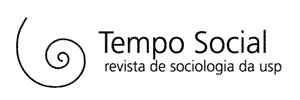Abstract
As a concept, mobility captures the common impression that one’s lifeworld is in flux, with not only people, but also cultures, objects, capital, businesses, services, diseases, media, images, information, and ideas circulating across (and even beyond) the planet. The scholarly literature is replete with metaphors trying to describe (perceived) altered spatial and temporal movements: deterritorialization, reterritorialization, and scapes; time-space compression, distantiation, or punctuation; the network society and its space of flows; the death of distance and the acceleration of modern life; and nomadology. Scholars have used figures of mobile people, too, from nomads to pilgrims, to describe both self and other in the social sciences and humanities for a long time. Taking the societal implications of various forms of mobility seriously and not as a given, the critical discussion of mobility concepts and figures presented here helps us to assess the analytical purchase of the conceptual perspective of mobility studies to normalize movement within the single category of “mobility.”
Keywords:
Mobility; Theory; Conceptualization; Figures; Anthropology
